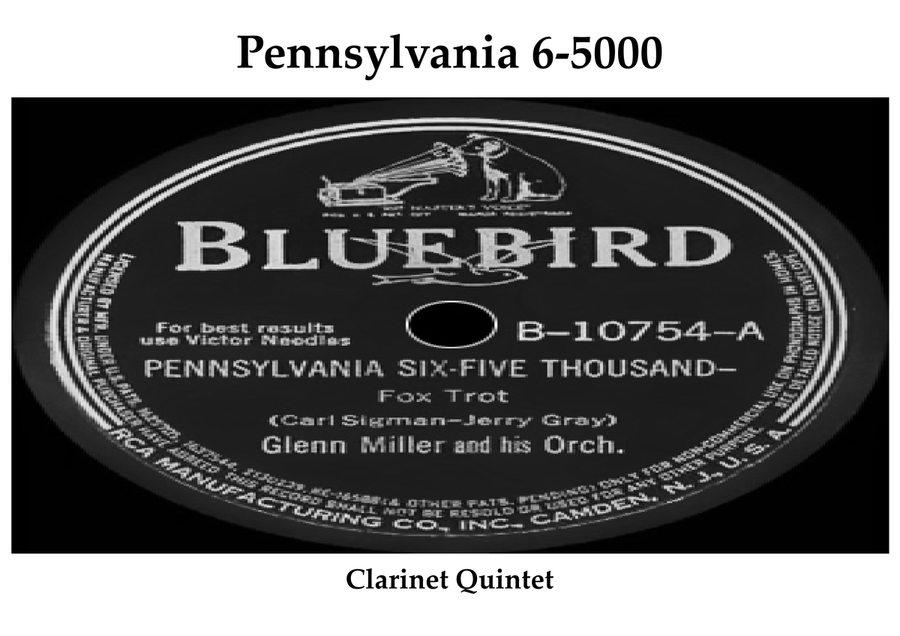Clarinet Quintet,Woodwind Ensemble Bass Clarinet,E-Flat Clarinet - Level 3 - Digital Download SKU: A0.1437299 Composed by Carl Sigman and Jerry Gray. Arranged by Keith Terrett. Instructional,Jazz,Multicultural,Standards,World. 27 pages. Keith Terrett #1017368. Published by Keith Terrett (A0.1437299). An arrangement of Pennsylvania 6-5000 for Clarintet Quintet. By Jerry Gray, Carl Sigma.Pennsylvania 6-5000 (also written Pennsylvania Six-Five Thousand) is a 1940 swing jazz and pop standard recorded by Glenn Miller and His Orchestra as a Bluebird 78 rpm single. The music was by Jerry Gray and the lyrics by Carl Sigman.Many big band musicians played in Hotel Pennsylvania's Cafe Rouge in New York City, including the Glenn Miller Orchestra.The hotel's telephone number, Pennsylvania 6-5000, inspired the Glenn Miller 1940 Top 5 Billboard hit of the same name, which had a 12-week chart run.[2] The instrumental was recorded on April 28, 1940 at the RCA Victor Studios at 155 East 24th Street in New York City. The 78 single was released in June, 1940 as RCA Victor Bluebird 78 B-10754-A backed with Rug Cutter's Swing. The song was also an advertisement for attendance at the band's live performances, as a call could be put through to Hotel Pennsylvanias venue the Cafe Rouge for a reservation.Johnny Best played the improvised trumpet solo on the recording. The Carl Sigman lyrics were not used, only the refrain was shouted by the band after the ringing of the telephone.Two different sheet music covers were released with different photos of Glenn Miller.The song became a jazz and big band standard also recorded by the Andrews Sisters, Judy Garland and Martha Raye in a duet, the Brian Setzer Orchestra, Jimmy Mundy and His Orchestra (1959), Louise Gold, Kathy Miller, Martin Brushane Big Band, the Blue Moon Big Band (1999), in a 1976 Carol Burnett Show episode in a tribute to Glenn Miller, Syd Lawrence, Michael Maxwell and His Orchestra, Richard Hunt and Jerry Nelson (Bobby Benson and the Baby Band) in The Muppet Show (1979, Episode 319), Fud Candrix and His Orchestra, Jerry Gray, Mina, Lou Haskins, Jack Livingston, Raquel Rastenni (1941) in Copenhagen, Starlight Orchestra, Klaus Wunderlich, New 101 Strings Orchestra, Heptet, Meco, Tex Beneke, The Modernaires, Jack Million Band, Al Pierson Big Band, BBC Big Band Orchestra, SWR Big Band, and by Captain Cook und seine singenden Saxophone in 2012.Fats Waller's arrangement of the song for piano was published in the UK songbook Francis & Day's Album of Fats Waller: Musical Rhythms in the 1940s.
